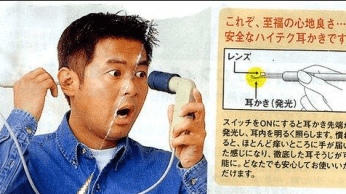Hello… to a good listener!
October 11, 2016
on
on
For no particular reason I was looking at the Wikipedia article on microphones, and I noted in the second paragraph a trivial but relevant detail: "Microphones are used in many applications such as telephones, hearing aids, public address systems etc.". The first application mentioned, the telephone - even if it is not the first one we think of when speaking of microphones - seems logical to me: the microphone and the telephone were developed together. If, a century and a half after that fruitful marriage, humans talk to each other more than ever, they surely make massive use of the microphone in their phone?
The surprise comes from the second application mentioned: hearing aids! I didn’t expect to see them there, but they are experiencing rapid development, generally associated with an ageing population.
In terms of the technology, the main thrust of microphone development is in an emerging component, the MEMs Microphone. These electromechanical microsystems and particularly the bioMEMS types used in the bio medical domain - into which hearing aids fall - are, as in any hybrid field, interesting components. Today, the main competitor to MEMS microphones is the electret microphone, much cheaper and widely used, but it is losing ground. Smaller, surface mounted MEMS microphones enable miniaturization and last longer..
Between MEMs and bioMEMS microphones, the cost differences are reflected both in the better specifications (for example a current consumption of 300 µA at 1.5 V for the one, 30 µA at 0.9 V for the other) and in the differences in production volumes: millions of units for medical use, billions for other uses.
 Talking of billions, if you are looking for an electronics industry into which to invest your savings, hearing aids seem a worthy destination. Ageing populations guarantee a flourishing development , and the irreversible damage caused by the high sound levels to which the young expose themselves, promise great dividends from audiology! .
Talking of billions, if you are looking for an electronics industry into which to invest your savings, hearing aids seem a worthy destination. Ageing populations guarantee a flourishing development , and the irreversible damage caused by the high sound levels to which the young expose themselves, promise great dividends from audiology! .
The surprise comes from the second application mentioned: hearing aids! I didn’t expect to see them there, but they are experiencing rapid development, generally associated with an ageing population.
In terms of the technology, the main thrust of microphone development is in an emerging component, the MEMs Microphone. These electromechanical microsystems and particularly the bioMEMS types used in the bio medical domain - into which hearing aids fall - are, as in any hybrid field, interesting components. Today, the main competitor to MEMS microphones is the electret microphone, much cheaper and widely used, but it is losing ground. Smaller, surface mounted MEMS microphones enable miniaturization and last longer..
Between MEMs and bioMEMS microphones, the cost differences are reflected both in the better specifications (for example a current consumption of 300 µA at 1.5 V for the one, 30 µA at 0.9 V for the other) and in the differences in production volumes: millions of units for medical use, billions for other uses.
 Talking of billions, if you are looking for an electronics industry into which to invest your savings, hearing aids seem a worthy destination. Ageing populations guarantee a flourishing development , and the irreversible damage caused by the high sound levels to which the young expose themselves, promise great dividends from audiology! .
Talking of billions, if you are looking for an electronics industry into which to invest your savings, hearing aids seem a worthy destination. Ageing populations guarantee a flourishing development , and the irreversible damage caused by the high sound levels to which the young expose themselves, promise great dividends from audiology! .Read full article
Hide full article



Discussion (0 comments)